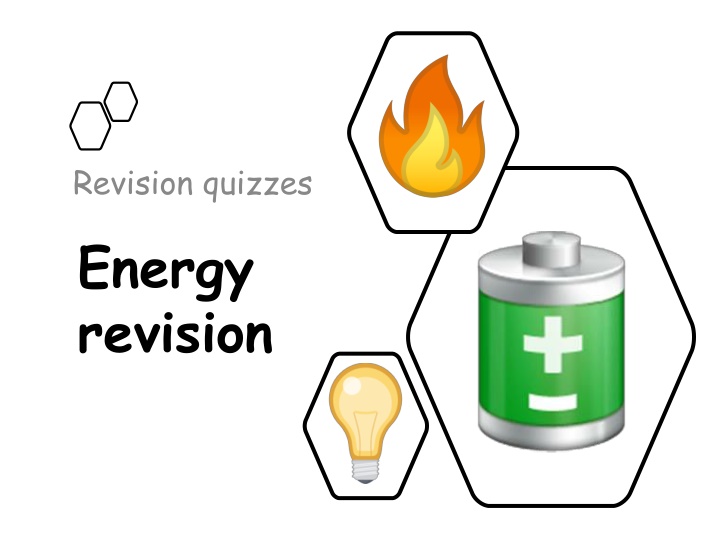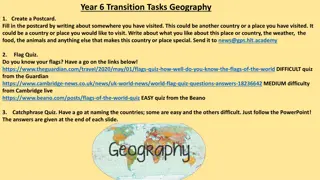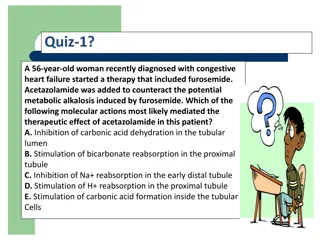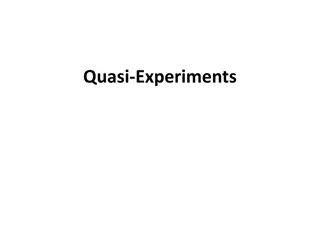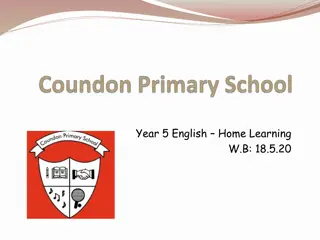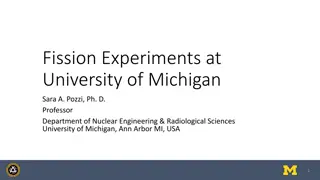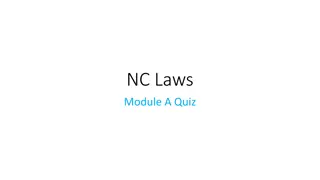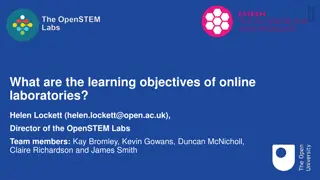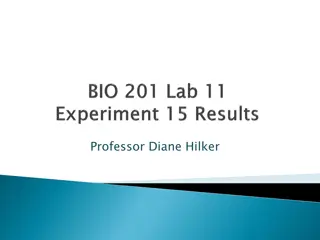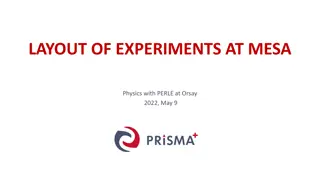Energy Quizzes and Experiments
In these quizzes and experiments, explore different types of energy and energy changes. Includes tables, diagrams, temperature experiments, fossil fuels, and more.
Download Presentation

Please find below an Image/Link to download the presentation.
The content on the website is provided AS IS for your information and personal use only. It may not be sold, licensed, or shared on other websites without obtaining consent from the author.If you encounter any issues during the download, it is possible that the publisher has removed the file from their server.
You are allowed to download the files provided on this website for personal or commercial use, subject to the condition that they are used lawfully. All files are the property of their respective owners.
The content on the website is provided AS IS for your information and personal use only. It may not be sold, licensed, or shared on other websites without obtaining consent from the author.
E N D
Presentation Transcript
Revision quizzes Energy revision
Quiz 1 Copy and complete the table below. Add the 8 types of energy into the table and give an example of that type of energy Type of energy Example
Quiz 2 Energy is always being changed from one type to another. These can be represented by energy change (or Sankey) diagrams like the one below for a light bulb: Electrical Energy Light Energy + Heat Energy Draw energy diagrams like the one above for the following examples. 1. Lawn mower 2. Man running 3. Car moving 4. Radio playing music 5. Lump of coal burning 6. Tv playing 7. Playing guitar 8. Solar panel in the sun
Quiz 3 At the back of your jotter copy and complete the energy change diagrams. 1. Chemical energy 5000 kJ Kinetic energy 4320 kJ Car Heat energy ? Boy Kinetic energy 222 kJ 2. Chemical energy ? Heat energy 78 kJ Plane Kinetic energy 14,000 kJ 3. Chemical energy 20,000 kJ Heat energy 2400 kJ Sound energy ?
Quiz 4 A student carried out an experiment to see which food contained the most energy by burning 1g of each one and using it to heat 100ml of water in a beaker. Results of the experiment are shown below Food Temperature of water at start (oC) Temperature of water after burning food (oC) 25 27 31 28 Change in temperature (oC) Rice Bread Pasta Potato 18 21 20 19 1. Complete the table by working out how much the temperature has risen for each experiment 2. Draw a bar graph showing change in temperature for each type of food 3. Which food source released the most energy?
Quiz 5 Copy the paragraph below filling in the gaps. Use the words that are given. FOSSIL, BURIED, LIGHT, CHEMICAL, SEDIMENT, COAL, PLANTS, NATURAL GAS, PHOTOSYNTHESIS, CREATURES, MILLIONS, OIL, SEA The Sun produces a great deal of ________ energy and heat energy. Some of this reaches the Earth. _____________ can trap this energy and change it by a process called ___________________. Some of the energy becomes locked in them, in the form of _____________ energy. Over many years, loads and loads of plants grew. Some were ______________ underground. Their energy became trapped as they were turned into _______________. _____________ that fed on the plants fell to the bottom of the ________. They were buried under ____________ and chemical changes occurred to make ____________ and ______________. We call fuels formed from living things in this way ______________ fuels.
Quiz 6 Use your jotter and the internet to find the answers to the following questions. 1. Where does the energy stored in fossil fuel come from originally? 2. Why do we call fossil fuels non-renewable? 3. Approximately how many years supply of coal, oil, and gas do we have? 4. Why is natural gas becoming more popular than coal? 5. What are the advantages of fossil fuels? 6. What is the main advantage of oil over coal? 7. What gas is released when sulfur impurities in coal burn? 8. What are the two substances formed when fuels are burned? 9. What advantages does coal have over oil and natural gas? (Hint: Think about extraction and transportation). 10.Why do we need to reduce the amount of fossil fuels we burn as fuel? 11. How can we reduce our reliance on fossil fuels?
Quiz 7 1. Draw the diagram of fractional distillation column below 2. 3. For Labels A-F add in the different fractions What makes the crude oil separate into the different fractions?
Quiz 8 Copy and complete the paragraph below and use the word bank provide to help you fill in the blanks Carbon dioxide sulphur dioxide habitats solar electricity global warming hydroelectric pollutant bio-diesel We burn fossil fuels in power stations to generate __________ and in vehicles so we can travel. When we burn these fossil fuels we make _______ ________ which is a greenhouse gas. This means it traps the heat in Earth causing _______ _________. It also makes _______ ___________ which causes acid rain. We already have some alternative methods of generating electricity such as ______, wind, tidal, ____________ and wave machines which do not produce any _______ gases but these are often expensive. Another problem with these alternative resources is that building them can change ________. Scientists are researching new fuels for vehicles such as _________ and using fuel cells.
Quiz 9 Create a mind map showing at least two facts for each bubble. What can we do about it Problems with burning fossil fuels Impact on wildlife Impact on people Impact on environment
Quiz 10 1. Copy and complete the diagrams below 2. What is the name used to describe what is happening to light in question 1? 3. How does the angle of incidence compare with the angle of reflection? 4. Give a use in every day life for this?
Quiz 11 1. Draw and label the diagram showing reflection below ? ? Word bank: Angle of incidence Angle of reflection Ray of incidence Ray of reflection Normal ? ? ? 2. Complete the table below Angle of Incidence (o) 0 10 20 30 Angle of reflection (o)
Quiz 12 Copy and complete Refraction: When light enters a different ____________ its ___________ changes. If it enters a more dense medium its speed ______________ and it bends _____________ the normal. If light enters a ___________ dense medium, the ____________ increases and the lights _________ away from the normal. (o) Complete the diagram to show how light bends when it travels from air to water: Air Water
Quiz 13 1. Draw the EM spectrum below and add labels showing each type of radiation. 2. Create a table with types of radiation and then a use for each one. EM Radiation Use 3. Which is the only type of radiation we can see? 4. Which is type of radiation has longest waves
